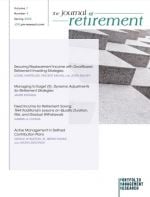EDHEC-RISK EXCELLENCE IN INVESTMENT MANAGEMENT RESEARCH: 15 MUST-READ ACADEMIC PAPERS
The results of the research work performed by EDHEC-Risk Institute have been published by leading specialised scientific publications Get the most of EDHEC-RISK Institute expertise on retirement, ESG…

The results of the research work performed by EDHEC-Risk Institute have been published by leading specialised scientific publications
Get the most of EDHEC-RISK Institute expertise on retirement, ESG, green bonds, internal carbon price, climate policy, climate change, diversification, risk management, asset-liability management, Covid-19 crisis, non-listed real estate, portfolio construction, behavioural finance, fixed income, commodities, factor premia, factor performance, smart beta…
#1 Is convexity efficiently priced? Evidence from international swap markets, Journal of Empirical Finance** (September 2021)
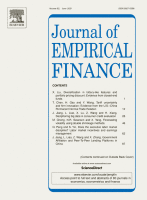
While it is widely claimed in the literature that convexity is correctly priced, we find evidence in four major swap markets that this is the case only on average and that extended periods occur when convexity-based trading strategies offer economically very significant exceptional returns. These abnormal returns can be reaped with fully no-peek-ahead strategies and after accounting for transaction costs. Authors Riccardo Rebonato and Riccardo Ronzani find a strong link between the periods of highest profitability and conditions of reduced market liquidity. This suggests that, as observed in recent liquidity studies on US Treasuries, temporary deviations from market efficiency at the long end of the swap curve occur when pseudo-arbitrageurs do not have sufficient capital to correct the mispricings.
Keywords:
Convexity, Term structure modelling, Swap market, Principal components
#2 Benefits of Open Architecture and Multi-Management in Real Estate Markets: Evidence from French Nonlisted Investment Trusts", Journal of Portfolio Management, Non-US Financial Markets Special Issue** (July 2021)
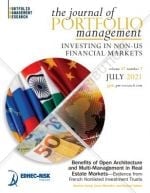
Authors Béatrice Guedj, Lionel Martellini and Shahyar Safaee provide evidence that the French nonlisted real estate investment funds market exhibits a substantial level of dispersion in risk and return characteristics, using a unique dataset of Sociétés Civiles de Placement Immobilier (SCPIs). They find several attributes to have meaningful explanatory power with respect to such differences in risk and performance. They also find that portfolios of nonlisted real estate investment funds exhibit a substantially lower level of volatility than the average fund in the panel and that 15 SCPIs are enough to capture over 90% of these diversification benefits. Taken together, these results suggest that substantial value can be added by selection and allocation decisions, which could form the basis for a welfare-enhancing open architecture multi-management approach to investment in unlisted real estate investment trusts.
Keywords:
Real estate, developed markets, portfolio construction, performance measurement
The research was supported by Swiss Life Asset Managers France as part of EDHEC-Risk Institute’s “Real Estate in Modern Investment Solutions” research chair.
#3 On the Resilience of ESG Stocks during COVID-19: Global Evidence?, CEPR Press - Covid Economics (July 2021)

Recent research on the U.S. stock market finds that the stocks of firms with high ESG (environmental, social, and corporate governance) ratings perform relatively well during crisis periods and thus serve as “rainy day assets” for investors. Gianfranco Gianfrate, Tim Kievid and Mathijs van Dijk assess this hypothesis in a global setting by assessing the relation between ESG and stock price performance during the COVID-19 crisis.
In a sample of more than 6,000 stocks in 45 countries, they find little evidence that firms with higher ESG ratings had better stock market performance in the first quarter of 2020. The exception is North America, where stocks with higher ESG ratings have shown some degree of resilience during crises. Their findings indicate that the ability of socially responsible firms to deliver superior risk-adjusted stock market performance is still debatable and, at best, geography dependent.
Keywords:
ESG, stock price, Covid-19
#4 How Do the Volatilities of Rates Depend on Their Level? The “Universal Relationship” Revisited, Journal of Fixed Income ** (Spring 2021)
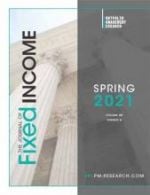
Authors present a straightforward extension valid in the current negative-rate regime of the “universal relationship” uncovered in De Guillaume, Rebonato, and Pogudin (2013) between the level of rates and their volatility. The authors also provide an explanation of the origin of this relationship by showing the existence of two sharply distinct regimes for the volatility of real rates as a function of real rate levels, and by linking periods of high inflation with periods of high real rates. Finally, they provide evidence that the “volatility of volatility” also displays a “universal” behavior, with a significant linear dependence on the level of rates (and of the volatility itself).
Keywords:
Fixed income and structured finance, volatility measures, quantitative methods, statistical methods, developed markets.
#5 Digitising investing in the light of behavioural finance findings, Journal of Digital Banking (May 2021)

Investing is still very much the least digitised banking service. All too often, digitisation boils down to cold automation, which explains why digital conversion rates are well below those at a branch. This paper discusses that, in order to be successful, the process needs to (over)compensate the lack of human encouragement in a digital context. In this paper, Jurgen Vandenbroucke demonstrate how behavioural finance enhances the business value of digital investing. Use cases illustrate the power of insights from behavioural economics such as framing, nudging and refined investor profiling. He proposes three important metrics to guide the digitisation of investing: conversion, rejuvenation and retention.
Keywords:
Digital; investing; behavioural finance; conversion; retention; rejuvenation
#6 Covid-19 and smart beta : A case study on the role of sectors, Financial Markets and Portfolio Management ** (April 2021)
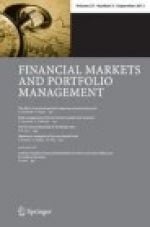
Authors Bernd Scherer and Milot Hasaj investigate the role of sectors on the performance of smart beta products during the COVID-19 crisis. Cross-sectional differences in excess returns (versus a market capitalized portfolio) are driven by strong exposures to COVID-19-related industry rotation, rather than to long-term structural causes.
Keywords:
Smart beta, sector performance, Covid-19, ESG
Results also published in the EDHEC-Risk Working Paper.
#7 Do the Shades of Green Matter? The Pricing and Ownership of “Dark-green” Bonds, Hong Kong Academy of Finance – AoF (February 2021)
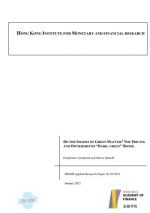
This study explores whether the green bonds rated “dark green” by CICERO are priced differently in the market from the light/medium-green ones as well as from the conventional bonds. To measure whether dark-green bonds are priced differently, we match our bonds, rated by CICERO, with comparable bonds that differ as little as possible apart from the green feature. The analysis identified bonds from the same issuer, with the same currency, rating, maturity type, payment rank and coupon type. Gianfranco Gianfrate and Marco Spinelli find that on average dark-green bonds are not priced differently from otherwise similar non-green bonds. However, we find that the premium for darkgreen bonds increases over time and has been particularly penalised in 2020, possibly because of less investor focus on assets’ environmental footprint during the COVID-19 crisis.
Keywords:
Green bonds, dark-green bonds, Covid-19, carbon footprint
Watch the replay of Gianfranco’s presentation on the merits and limits of green bond financing.
#8 Capital structure choices, pension fund allocation decisions and the rational pricing of liability streams, Journal of Pension Economics & Finance ** (February 2021)
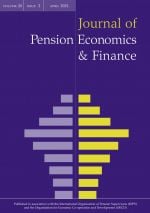
This paper introduces an integrated asset-liability management model that allows for the joint quantitative analysis of capital structure choices, pension fund allocation decisions and rational pricing of liabilities. Aurhors Lionel Martellini and Vincent Milhau confirm that capital structure decisions have a substantial impact on the value of pension claims, and they provide a quantitative assessment of the mispricing induced by the use of an arbitrary regulatory discount rate. We also present a quantitative assessment of the asset substitution effect implied by a change in the pension fund allocation to risky assets taking place after the corporate and pension obligation claims have been issued.
Keywords:
Asset-liability management, capital structure, corporate pension plan, default risk
#9 Optimal portfolio strategies in the presence of regimes in asset returns, Journal of Banking & Finance ** (February 2021)
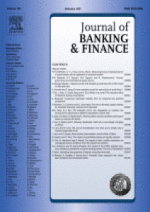
This paper analyzes optimal portfolio and consumption strategies in a regime-switching economy with unobservable states and predictability of risky asset returns. Carlos Heitor Campani, René Garcia and Marcelo Lewina develop approximate analytical solutions to the unconstrained dynamic problem. The approximation is shown to be fast and accurate in a four-regime setting with an allocation to four assets compared to the numerical solution developed in Guidolin and Timmermann (2007). The computation time of the approximate solution is shown to be practically independent of the number of assets when no predictors are present and only marginally affected by the number of predictors. While the portfolio policy strongly depends on the current state of the economy, the consumption-to-wealth ratio is roughly state-independent. Predictability considerably changes the optimal portfolios. Hedging demands are negligible with regimes and no predictability, but are important with predictability. On the other hand, the consumption-to-wealth ratio is not very impacted by the predictor. We provide an out-of-sample statistical assessment of the returns provided by a multi-regime strategy with respect to a single-regime and to a strategy.
Keywords:
Dynamic asset allocation, stochastic differential utility, consumption and portfolio optimal strategies, regime switching economy, predictability, large and small caps size effects
#10 Determinants of Internal Carbon Pricing, Energy Policy ** (August 2020)

Action against climate change is urgent and requires the participation of firms. The progressive internalization of carbon costs by firms is essential in the transition to a low-carbon economy. Internal carbon pricing is an emerging set of practices voluntarily adopted by companies to embed climate footprint in operations and business models. Nuno Bento and Gianfranco Gianfrate explore the factors that explain the adoption of internal carbon prices (ICP) among global companies reporting to the Carbon Disclosure Project between 2015 and 2017. They specifically test whether the macroeconomic, regulatory, industry, and firm-specific characteristics affect the disclosed level of the ICPs. Results show that the ICPs depend to a large extent on the national climate policy, country's development, industry, and corporate governance. Furthermore, context explain more the differences in ICP than industry and firm-specific characteristics. Thus uncertainties around countries' climate policy hampers carbon pricing in business. These findings shed light on the factors that contribute to the dissemination of carbon pricing in society.
Keywords:
Environmental economics, corporate environmentalism, internal carbon price, climate policy, climate change
Insigful results relayed by ESG Clarity Intelligence.
#11 Robust and Interpretable Liquidity Proxies for Market and Funding Liquidity, Journal of Fixed Income** (Winter 2021)
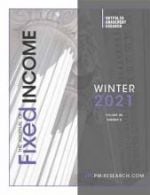
Riccardo Rebonato and Hong Sherwin introduce a method to create two interpretable liquidity measures, which we associate with market and funding liquidity. The construction is based on creating two parsimonious linear combinations of the many liquidity proxies often used in the liquidity literature, both displaying mean-reverting behavior, but characterized by very different reversion speeds. Our construction does not require transaction-level data (such as volume or bid-offer spreads), but correlates well both with other measure that do, and with other liquidity proxies (liquidity as ‘noise’, liquidity as broker-dealer leverage) recently introduced in the literature.
Keywords: Fixed income and structured finance, statistical methods, risk management
Cutting-hedge research published in the EDHEC-Risk Institute special issue of the EDHEC Research for Institutional Money Management supplement to Pensions & Investments.
#12 Maximizing an equity portfolio excess growth rate: a new form of smart beta strategy? , Quantitative Finance ** (April 2020)
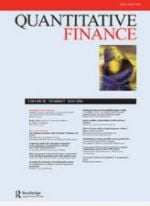
It has been claimed that, for dynamic investment strategies, the simple act of rebalancing a portfolio can be a source of additional performance, sometimes referred to as the volatility pumping effect or the diversification bonus because volatility and diversification turn out to be key drivers of the portfolio performance. Stochastic portfolio theory suggests that the portfolio excess growth rate, defined as the difference between the portfolio expected growth rate and the weighted-average expected growth rate of the assets in the portfolio, is an important component of this additional performance. In this context, one might wonder whether maximizing a portfolio excess growth rate would lead to an improvement in the portfolio performance or risk-adjusted performance. This paper provides a thorough empirical analysis of the maximization of an equity portfolio excess growth rate in a portfolio construction context for individual stocks. In out-of-sample empirical tests conducted on individual stocks from 4 different regions (US, UK, Eurozone and Japan), Jean-Michel Maeso and Lionel Martellini find that portfolios that maximize the excess growth rate are characterized by a strong negative exposure to the low volatility factor and a higher than 1 exposure to the market factor, implying that such portfolios are attractive alternatives to competing smart portfolios in markets where the low volatility anomaly does not hold (e.g. in the UK, or in rising interest rate scenarios) or in bull market environments.
Keywords: Portfolio construction, diversification, excess growth rate, stochastic portfolio theory
This research was supported by BdF Gestion in the context of the “Maximizing and Harvesting the Rebalancing Premium in Equity Markets” research chair at EDHEC-Risk Institute
#13 Factor based commodity investing, Journal of Banking & Finance ** (June 2020)
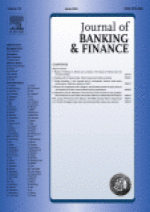
A multi-factor commodity portfolio combining the momentum, basis, basis-momentum, hedging pressure and value commodity factor portfolios outperforms significantly, economically and statistically, widely used commodity benchmarks. Athanasios Sakkas and NikolaosTessaromatis
find evidence that a variance timing strategy applied to commodity factor portfolios generates timing gains for the commodity momentum factor but not the other commodity factors. Dynamic commodities strategies based on commodity factor return prediction models provide little value added.
Keywords:
Commodities, factor premia, momentum, basis, basis-momentum, variance timing, commodity return predictability
#14 Factoring characteristics into returns: A clinical study on the SMB and HML portfolio construction methods, Journal of Banking & Finance ** (May 2020)

Factor performance is highly sensitive to the number of stocks composing its long and short basis portfolios. Marie Lambert, Boris Fays and Georges Hübnerexamine three methodological choices that have an impact on portfolio diversification: the (in)dependence and the (a)symmetry of the stock sorting procedure and the sorting breakpoints. They show that these methodological choices have to be considered jointly and that a dependent (D) sort that starts with the control variables with whole sample or “name” (N) breakpoints and that performs a symmetric (S) sort on characteristics minimizes the biases from unpriced risks. This paper also demonstrates that the biases introduced by currently popular sorting methodologies can become very severe under specific market conditions and are not driven by small capitalizations. This alternative framework generates much stronger “turn-of-the-year” size and “through-the-year” book-to-market effects than what is conventionally documented.
Keywords:
Portfolio sorting, factor performance, factor construction methods
#15 Securing Replacement Income with Goal-Based Retirement Investing Strategies, Journal of Retirement ** (Spring 2020)
To supplement retirement benefits received from public and private pension systems, individuals need to make voluntary contributions and decide how to efficiently invest these contributions. In this article, Lionel Martellini and Vincent Milhau analyze the problem of how to secure minimum levels of replacement income in retirement while offering attractive probabilities of reaching higher levels. Such strategies can offer an interesting alternative to target date funds, which have no focus on the generation of replacement income, or annuities, which can be used to secure replacement income but at the cost of substantial rigidity.
Keywords:
Commodities, factor premia, momentum, basis, basis-momentum, variance timing, commodity return predictability
EDHEC-Risk Institute was set up to conduct world-class academic research and highlight its applications to the industry. In keeping with this mission, the Institute systematically seeks to validate the academic quality of its research through publications in leading scholarly journals, implements a multifaceted communications policy to inform investors and asset managers on state-of-the-art concepts and techniques, and develops business partnerships to launch innovative products. Here is a selection of our latest top 10 academic publications classified from the most to the least recent.
Stay tuned on our website to be informed on EDHEC-Risk latest research

